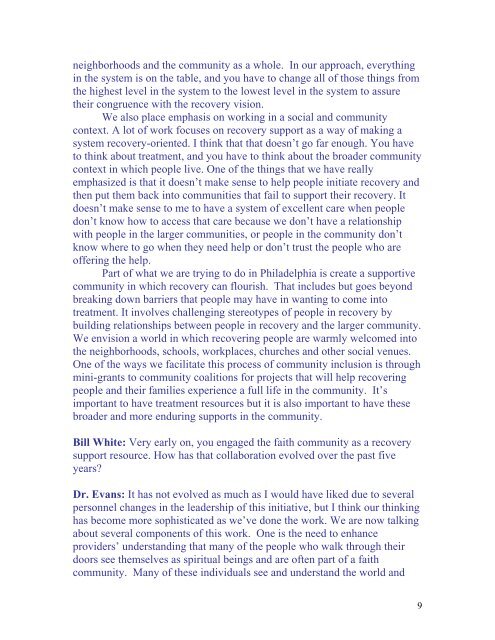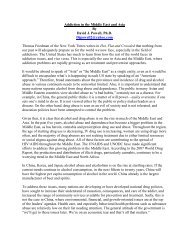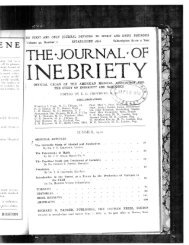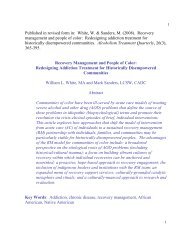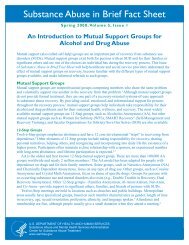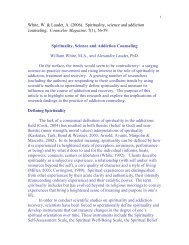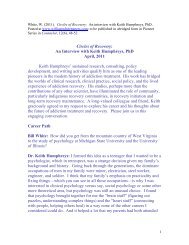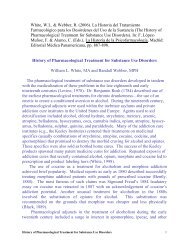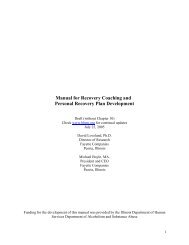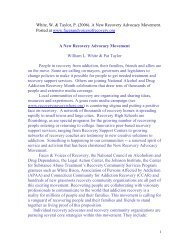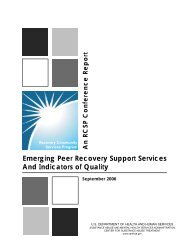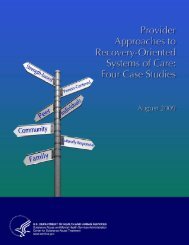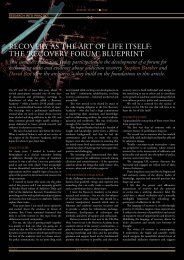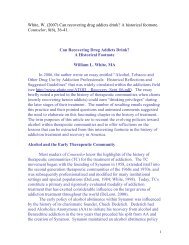An Interview with Arthur C. Evans, Jr., PhD Dr. Arthu - William L. White
An Interview with Arthur C. Evans, Jr., PhD Dr. Arthu - William L. White
An Interview with Arthur C. Evans, Jr., PhD Dr. Arthu - William L. White
- No tags were found...
Create successful ePaper yourself
Turn your PDF publications into a flip-book with our unique Google optimized e-Paper software.
neighborhoods and the community as a whole. In our approach, everythingin the system is on the table, and you have to change all of those things fromthe highest level in the system to the lowest level in the system to assuretheir congruence <strong>with</strong> the recovery vision.We also place emphasis on working in a social and communitycontext. A lot of work focuses on recovery support as a way of making asystem recovery-oriented. I think that that doesn’t go far enough. You haveto think about treatment, and you have to think about the broader communitycontext in which people live. One of the things that we have reallyemphasized is that it doesn’t make sense to help people initiate recovery andthen put them back into communities that fail to support their recovery. Itdoesn’t make sense to me to have a system of excellent care when peopledon’t know how to access that care because we don’t have a relationship<strong>with</strong> people in the larger communities, or people in the community don’tknow where to go when they need help or don’t trust the people who areoffering the help.Part of what we are trying to do in Philadelphia is create a supportivecommunity in which recovery can flourish. That includes but goes beyondbreaking down barriers that people may have in wanting to come intotreatment. It involves challenging stereotypes of people in recovery bybuilding relationships between people in recovery and the larger community.We envision a world in which recovering people are warmly welcomed intothe neighborhoods, schools, workplaces, churches and other social venues.One of the ways we facilitate this process of community inclusion is throughmini-grants to community coalitions for projects that will help recoveringpeople and their families experience a full life in the community. It’simportant to have treatment resources but it is also important to have thesebroader and more enduring supports in the community.Bill <strong>White</strong>: Very early on, you engaged the faith community as a recoverysupport resource. How has that collaboration evolved over the past fiveyears?<strong>Dr</strong>. <strong>Evans</strong>: It has not evolved as much as I would have liked due to severalpersonnel changes in the leadership of this initiative, but I think our thinkinghas become more sophisticated as we’ve done the work. We are now talkingabout several components of this work. One is the need to enhanceproviders’ understanding that many of the people who walk through theirdoors see themselves as spiritual beings and are often part of a faithcommunity. Many of these individuals see and understand the world and9


